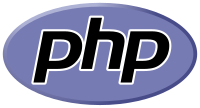So, you’ve decided to learn PHP—awesome choice! But before you start coding like a pro, you need a proper environment to run your scripts. That’s where XAMPP, MAMP, and LAMP come in. Think of them as your PHP playground, where you can write, test, and break things (don’t worry, no real damage will be done).
In this guide, we’ll explain what these tools are, how they work, and which one is best for you. Spoiler alert: The answer depends on whether you love Windows, macOS, or Linux. Let’s dive in!
What Is a Local Server Environment?
A local server environment is like having a mini-internet on your own computer. Instead of uploading PHP files to a live server, you can test them locally, saving you time (and potential embarrassment from errors). These environments typically include:
Apache – A web server to process PHP files.
MySQL/MariaDB – A database system to store data.
PHP – The actual programming language we’re learning.
And instead of installing everything separately, we use bundled software like XAMPP, MAMP, or LAMP to set it all up in one go.
XAMPP – The Cross-Platform Champion
What is XAMPP?
XAMPP stands for:
- X – Cross-platform (Windows, macOS, Linux)
- A – Apache (Web Server)
- M – MySQL/MariaDB (Database)
- P – PHP (Server-side scripting)
- P – Perl (Yes, it's there, but we don’t care about it much)
Why Use XAMPP?
- Works on Windows, macOS, and Linux.
- Super easy installation (literally next-next-finish).
- Comes with phpMyAdmin for managing databases.
- No complex configurations required.
Installing XAMPP
- Download XAMPP from Apache Friends.
- Install it like any normal software.
- Run the XAMPP Control Panel.
- Start Apache and MySQL.
- Open your browser and go to
http://localhost/. - Congratulations! You have a local PHP environment.
MAMP – The macOS Buddy
What is MAMP?
MAMP is specifically designed for macOS (but also available for Windows). It stands for:
- M – macOS (or Windows)
- A – Apache
- M – MySQL
- P – PHP
Why Use MAMP?
- Best for macOS users.
- Comes with an intuitive dashboard.
- Easy switching between PHP versions.
- Supports Nginx if you don’t want Apache.
Installing MAMP
- Download MAMP from mamp.info.
- Install it and open the MAMP application.
- Click Start Servers.
- Open
http://localhost:8888/in your browser. - Boom! Your PHP environment is ready to rock.
LAMP – The Linux Powerhouse
What is LAMP?
LAMP is designed for Linux users and stands for:
- L – Linux (Ubuntu, Debian, etc.)
- A – Apache
- M – MySQL/MariaDB
- P – PHP
Unlike XAMPP and MAMP, LAMP requires some manual installation using the terminal. But hey, if you’re a Linux user, you probably enjoy typing fancy commands anyway.
Why Use LAMP?
- Perfect for Linux developers.
- Customizable and lightweight.
- Closest to real-world server environments.
- Secure and stable for long-term projects.
Installing LAMP on Ubuntu/Debian
- Open Terminal and update your package list:
sudo apt update - Install Apache:
sudo apt install apache2 - Install MySQL:
sudo apt install mysql-server - Install PHP:
sudo apt install php libapache2-mod-php php-mysql - Restart Apache:
sudo systemctl restart apache2 - Open your browser and go to
http://localhost/to see your local server in action.
Which One Should You Use?
| Feature | XAMPP | MAMP | LAMP |
|---|---|---|---|
| OS Compatibility | Windows, macOS, Linux | macOS, Windows | Linux only |
| Ease of Installation | ⭐⭐⭐⭐⭐ | ⭐⭐⭐⭐ | ⭐⭐ |
| Best For | Beginners, cross-platform devs | macOS users | Linux experts |
| Performance | Good | Good | Best |
| Customization | Medium | Low | High |
TL;DR:
- Windows users? Go with XAMPP.
- Mac users? Choose MAMP.
- Linux users? Set up LAMP like a pro.
Conclusion
Setting up a PHP development environment is super easy thanks to XAMPP, MAMP, and LAMP. Whether you're on Windows, macOS, or Linux, there’s a solution that fits your needs.
Now that you have your environment ready, it’s time to write some PHP! Stay tuned for the next lesson where we’ll actually start coding. Until then, happy setup and may your localhost always be error-free!

0 Comments